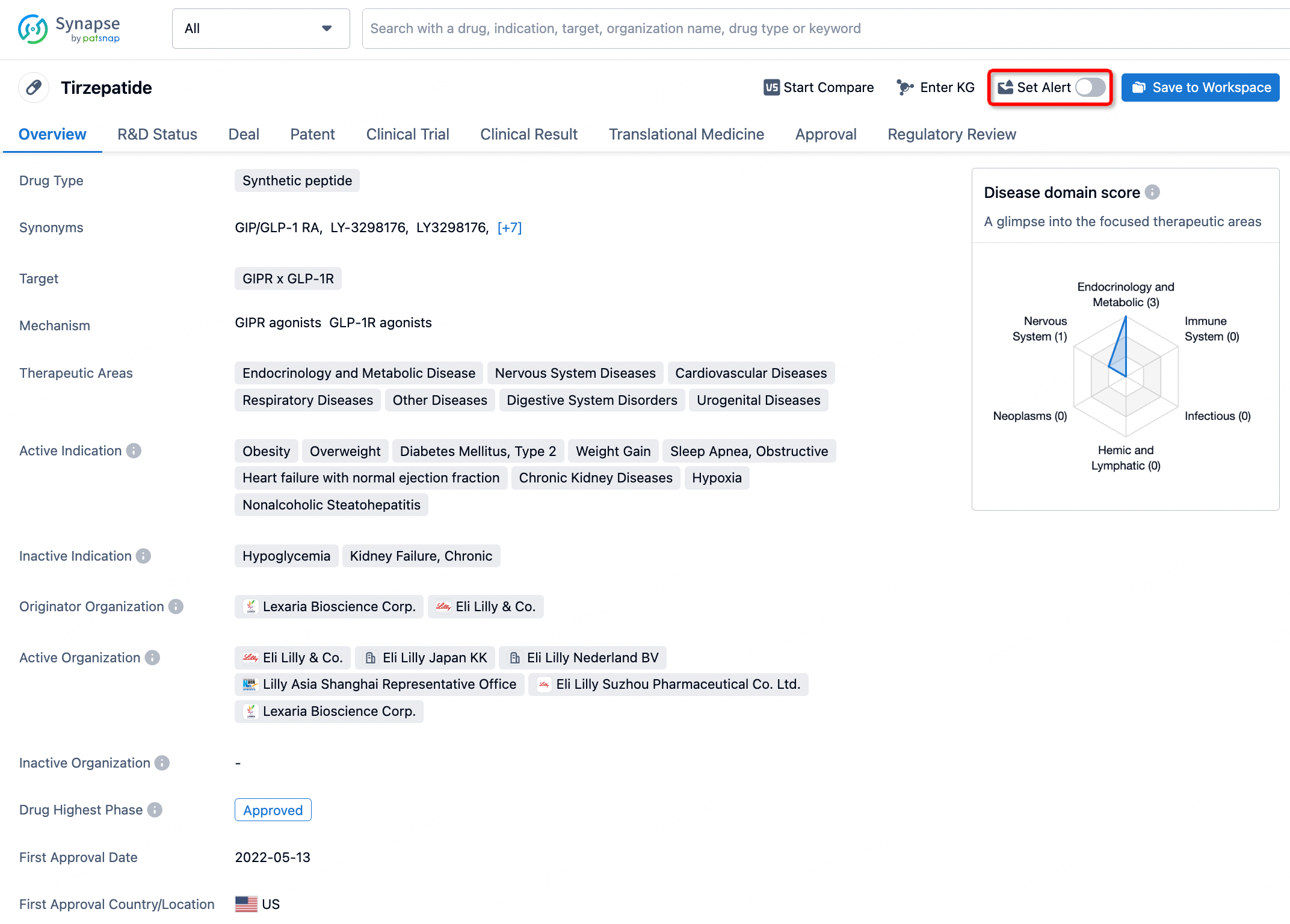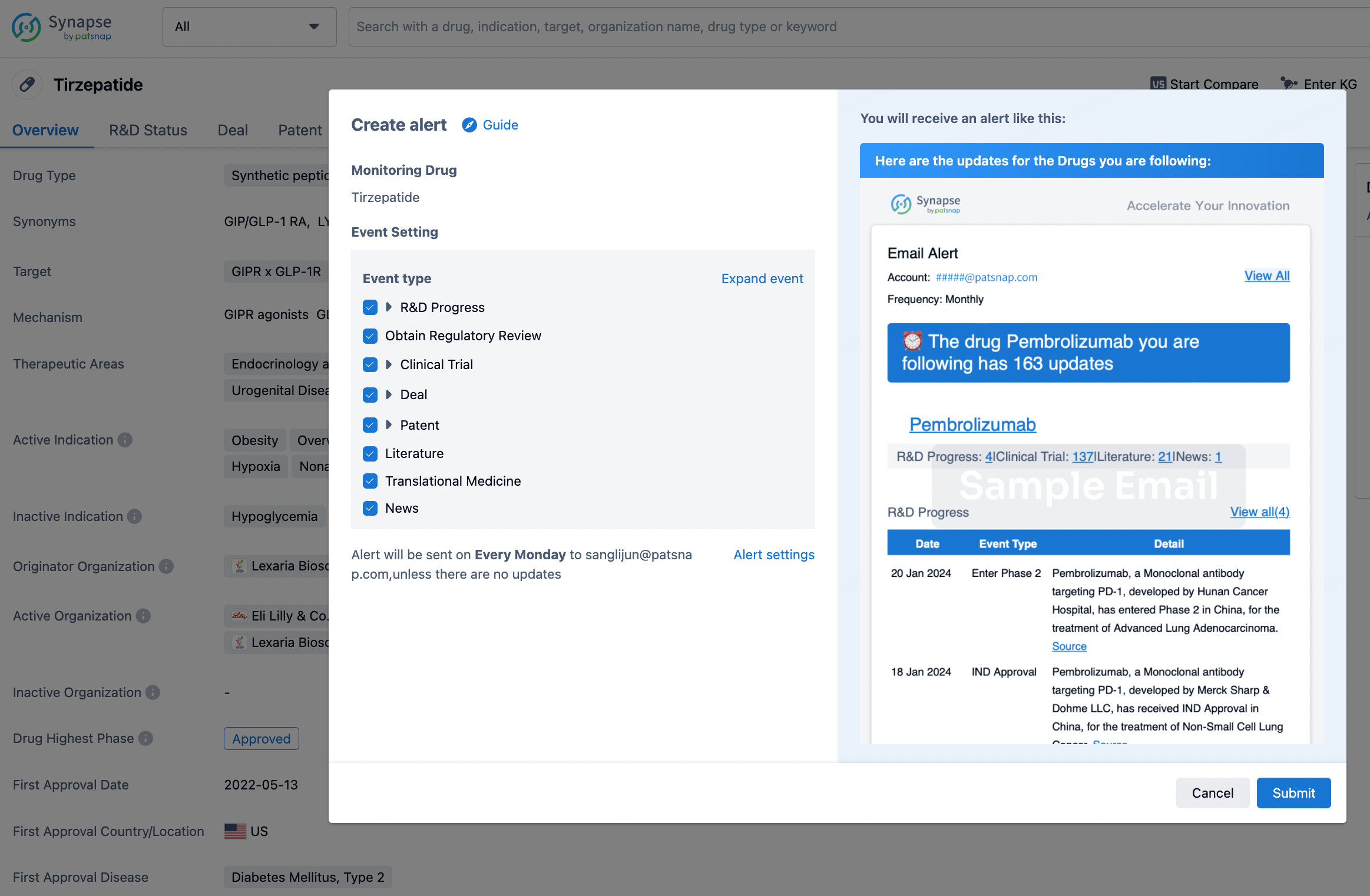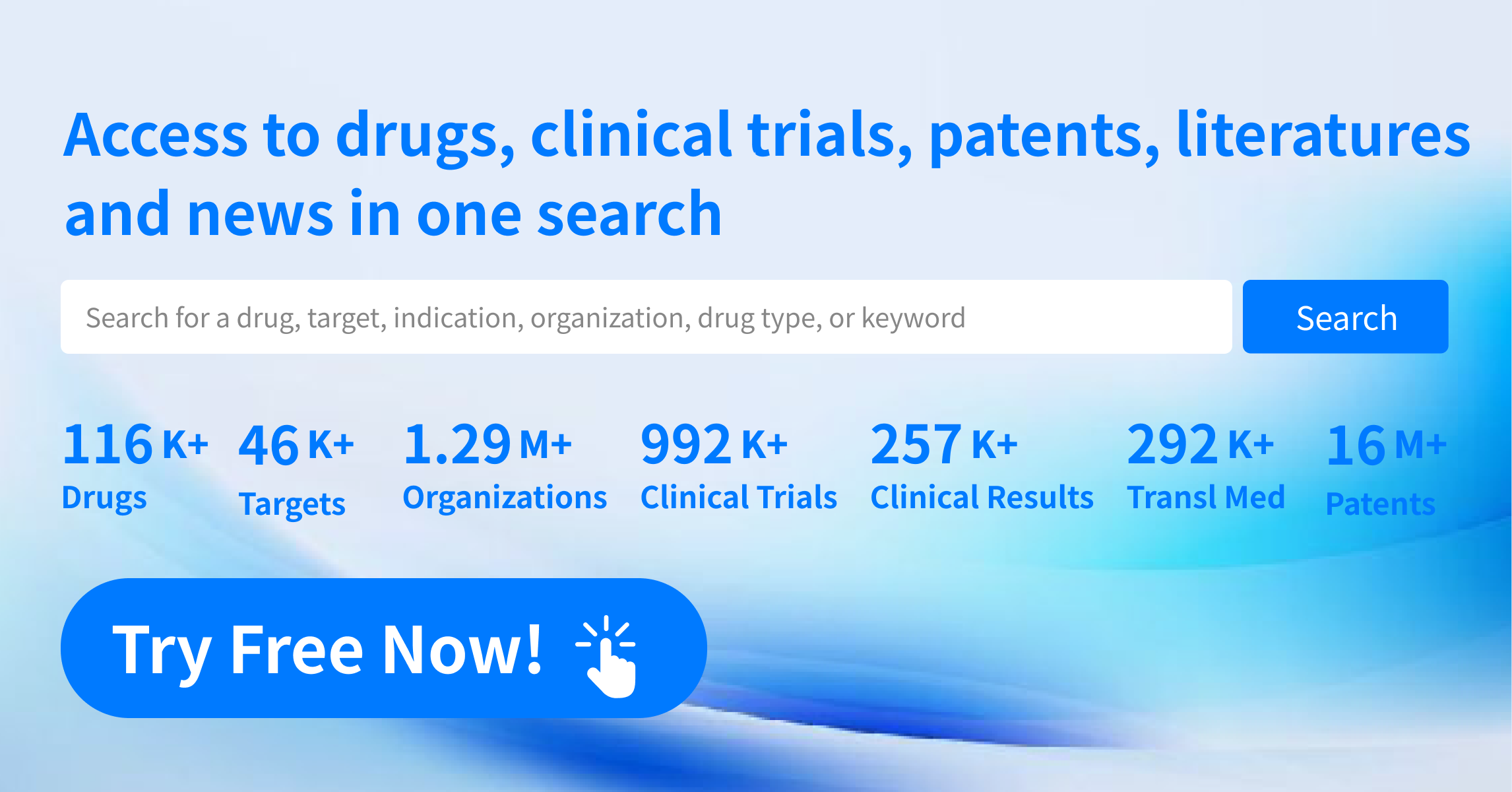Request Demo
What is the mechanism of Nedaplatin?
17 July 2024
Nedaplatin is a platinum-based chemotherapeutic agent, developed as a second-generation compound to counter some of the limitations of earlier platinum drugs like cisplatin and carboplatin. This drug is primarily used for the treatment of various cancers, including lung, esophageal, and head and neck cancers. Understanding the mechanism by which nedaplatin exerts its anti-cancer effects is crucial for its effective clinical use and for ongoing research to improve cancer therapies.
The cytotoxic effects of nedaplatin are primarily mediated through its interaction with DNA. Once administered, nedaplatin undergoes hydrolysis in the aqueous environment of the bloodstream and intracellular compartment to form active platinum species. These active species can then bind to DNA, forming platinum-DNA adducts. The most common types of adducts are intrastrand and interstrand cross-links, where the platinum atom binds to two adjacent nucleotides within the same DNA strand or between complementary strands, respectively. The formation of these adducts interferes with the normal function of DNA, which is crucial for cell survival and proliferation.
The platinum-DNA adducts lead to a variety of downstream effects that result in cellular apoptosis, or programmed cell death. The primary mechanism is the disruption of critical cellular processes like DNA replication and transcription. When the replication machinery encounters a platinum-DNA adduct, it stalls, leading to inhibition of DNA synthesis. Similarly, transcription is hindered because the RNA polymerase enzymes cannot progress along the DNA template. This blockage of replication and transcription activates cellular stress responses.
One of the key pathways activated in response to DNA damage is the p53 pathway. The p53 protein, often termed the "guardian of the genome," plays a crucial role in maintaining genomic stability. When DNA damage is detected, p53 is stabilized and accumulates in the cell, leading to the transcription of various target genes involved in cell cycle arrest and apoptosis. If the DNA damage induced by nedaplatin is too extensive to be repaired, p53 will initiate the apoptotic pathway, leading to cell death.
Moreover, nedaplatin also induces other types of cellular stress responses, such as the activation of the ATR (ataxia-telangiectasia and Rad3-related) and ATM (ataxia-telangiectasia mutated) kinases. These kinases further propagate the DNA damage signal, leading to the activation of downstream effectors like CHK1 and CHK2, which contribute to cell cycle arrest. This arrest provides cells with the opportunity to repair the DNA damage. However, if the damage is irreparable, these signaling cascades will eventually lead to apoptosis.
It's important to note that the effectiveness of nedaplatin, like other platinum-based drugs, can be influenced by various factors such as the presence of DNA repair mechanisms and the overall health of the patient. Tumor cells that have robust DNA repair systems, such as enhanced nucleotide excision repair (NER) or mismatch repair (MMR) mechanisms, can often resist the cytotoxic effects of nedaplatin. Consequently, ongoing research aims to find ways to overcome these resistance mechanisms, either by combining nedaplatin with other drugs that inhibit DNA repair or by developing new derivatives with improved efficacy.
In summary, the mechanism of nedaplatin involves its hydrolysis to form active platinum species, which then bind to DNA and form adducts, leading to disruption of replication and transcription. This DNA damage triggers cellular stress responses, prominently involving the p53 pathway, ultimately resulting in cell cycle arrest and apoptosis. Understanding these mechanisms not only provides insight into how nedaplatin works but also helps in developing strategies to enhance its therapeutic efficacy and overcome resistance in cancer treatment.
The cytotoxic effects of nedaplatin are primarily mediated through its interaction with DNA. Once administered, nedaplatin undergoes hydrolysis in the aqueous environment of the bloodstream and intracellular compartment to form active platinum species. These active species can then bind to DNA, forming platinum-DNA adducts. The most common types of adducts are intrastrand and interstrand cross-links, where the platinum atom binds to two adjacent nucleotides within the same DNA strand or between complementary strands, respectively. The formation of these adducts interferes with the normal function of DNA, which is crucial for cell survival and proliferation.
The platinum-DNA adducts lead to a variety of downstream effects that result in cellular apoptosis, or programmed cell death. The primary mechanism is the disruption of critical cellular processes like DNA replication and transcription. When the replication machinery encounters a platinum-DNA adduct, it stalls, leading to inhibition of DNA synthesis. Similarly, transcription is hindered because the RNA polymerase enzymes cannot progress along the DNA template. This blockage of replication and transcription activates cellular stress responses.
One of the key pathways activated in response to DNA damage is the p53 pathway. The p53 protein, often termed the "guardian of the genome," plays a crucial role in maintaining genomic stability. When DNA damage is detected, p53 is stabilized and accumulates in the cell, leading to the transcription of various target genes involved in cell cycle arrest and apoptosis. If the DNA damage induced by nedaplatin is too extensive to be repaired, p53 will initiate the apoptotic pathway, leading to cell death.
Moreover, nedaplatin also induces other types of cellular stress responses, such as the activation of the ATR (ataxia-telangiectasia and Rad3-related) and ATM (ataxia-telangiectasia mutated) kinases. These kinases further propagate the DNA damage signal, leading to the activation of downstream effectors like CHK1 and CHK2, which contribute to cell cycle arrest. This arrest provides cells with the opportunity to repair the DNA damage. However, if the damage is irreparable, these signaling cascades will eventually lead to apoptosis.
It's important to note that the effectiveness of nedaplatin, like other platinum-based drugs, can be influenced by various factors such as the presence of DNA repair mechanisms and the overall health of the patient. Tumor cells that have robust DNA repair systems, such as enhanced nucleotide excision repair (NER) or mismatch repair (MMR) mechanisms, can often resist the cytotoxic effects of nedaplatin. Consequently, ongoing research aims to find ways to overcome these resistance mechanisms, either by combining nedaplatin with other drugs that inhibit DNA repair or by developing new derivatives with improved efficacy.
In summary, the mechanism of nedaplatin involves its hydrolysis to form active platinum species, which then bind to DNA and form adducts, leading to disruption of replication and transcription. This DNA damage triggers cellular stress responses, prominently involving the p53 pathway, ultimately resulting in cell cycle arrest and apoptosis. Understanding these mechanisms not only provides insight into how nedaplatin works but also helps in developing strategies to enhance its therapeutic efficacy and overcome resistance in cancer treatment.
How to obtain the latest development progress of all drugs?
In the Synapse database, you can stay updated on the latest research and development advances of all drugs. This service is accessible anytime and anywhere, with updates available daily or weekly. Use the "Set Alert" function to stay informed. Click on the image below to embark on a brand new journey of drug discovery!
AI Agents Built for Biopharma Breakthroughs
Accelerate discovery. Empower decisions. Transform outcomes.
Get started for free today!
Accelerate Strategic R&D decision making with Synapse, PatSnap’s AI-powered Connected Innovation Intelligence Platform Built for Life Sciences Professionals.
Start your data trial now!
Synapse data is also accessible to external entities via APIs or data packages. Empower better decisions with the latest in pharmaceutical intelligence.


